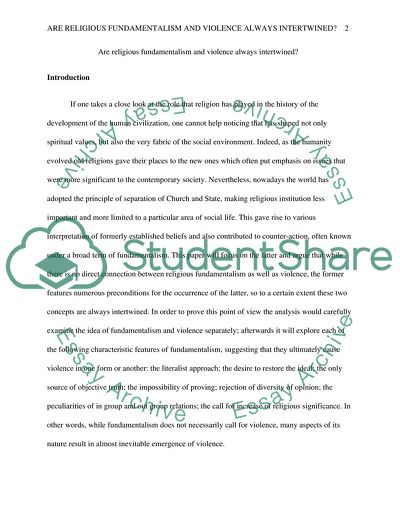Cite this document
(“Critically discuss whether religious fundamentalism and violence are Essay”, n.d.)
Critically discuss whether religious fundamentalism and violence are Essay. Retrieved from https://studentshare.org/sociology/1699586-critically-discuss-whether-religious-fundamentalism-and-violence-are-always-entertwined
Critically discuss whether religious fundamentalism and violence are Essay. Retrieved from https://studentshare.org/sociology/1699586-critically-discuss-whether-religious-fundamentalism-and-violence-are-always-entertwined
(Critically Discuss Whether Religious Fundamentalism and Violence Are Essay)
Critically Discuss Whether Religious Fundamentalism and Violence Are Essay. https://studentshare.org/sociology/1699586-critically-discuss-whether-religious-fundamentalism-and-violence-are-always-entertwined.
Critically Discuss Whether Religious Fundamentalism and Violence Are Essay. https://studentshare.org/sociology/1699586-critically-discuss-whether-religious-fundamentalism-and-violence-are-always-entertwined.
“Critically Discuss Whether Religious Fundamentalism and Violence Are Essay”, n.d. https://studentshare.org/sociology/1699586-critically-discuss-whether-religious-fundamentalism-and-violence-are-always-entertwined.


